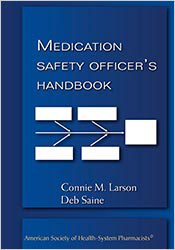Examples of Transformational Change
A study evaluated the roles and impact of clinical pharmacy services and pharmacy staffing on medication errors at 1,081 hospitals in the U.S. Pharmacists provided drug information services conducted drug protocol management, collected drug histories and participated in medical rounds.
The study demonstrated that reductions in medication costs and medication errors by 38% and 51%, respectively. See Bond C and Raehl C. Clinical pharmacy services, hospital pharmacy staffing, and medication errors in United States hospitals. Pharmacotherapy. 2002:22(2)134-47 .
Medication Review
A review of 17 studies in which pharmacists conducted medication reviews to identify drug-related problems in primary care, nursing home, hospital, and community settings found that pharmacists decreased the number of medications or doses, increased adherence, decreased adverse drug reactions, and improved quality of life while demonstrating facility and drug cost savings. See Chumney EC, Robinson LC. The effects of pharmacist interventions on patients with polypharmacy. Pharmacy Practice. 2006; 4(3): 103-9. [PDF]
Patient-Discharge Plan
An AHRQ-funded study showed that a comprehensive patient-discharge plan that included follow-up from a pharmacist decreased subsequent hospital visits by approximately 30%. Two to four days after discharge, a clinical pharmacist contacted patients in the intervention group to review and reinforce the discharge plan. The intervention group demonstrated an estimated $150,000 in savings in emergency department, hospital, and primary care visits, or approximately $412 per patient. See Jack B, Chetty V, Anthony D, et al. A reengineered hospital discharge program to decrease rehospitalization: A randomized trial. Ann Intern Med 2009; 178-87.
ASHP Best Practices and Resources
- Guidelines on medication cost management strategies for hospitals and health systems [PDF]
- Guidelines on medication use evaluation [PDF]
- Guidelines on the pharmacy and therapeutics committee and the formulary system [PDF]
- Statement on the principles for including medication and pharmaceutical care in health systems [PDF]
- The Pharmacist's Guide to Evidence-Based Medicine For Clinical Decision Making


